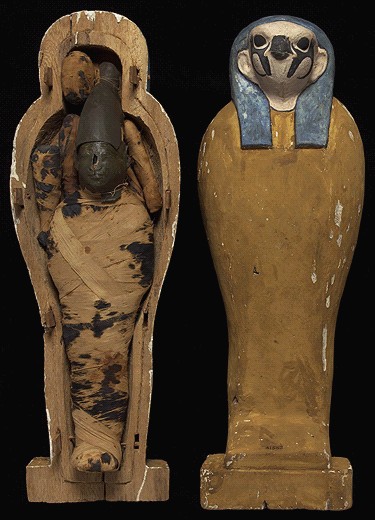|

|
CORN
MUMMY IN WOODEN COFFIN
Linen wrappings, wax, painted wood
Late Period, 664-305 BC
|
|
|
Osiris, supreme god of
resurrection, was closely associated with the life-giving forces
of nature, particularly the Nile and vegetation. Above all, he was
connected with germinating grain. The emergence of a living, growing,
plant from the apparently dormant seed hidden within the earth was
regarded by the Egyptians as a metaphor for the rebirth of a human
being from the lifeless husk of the corpse. The concept was translated
into physical form by the fashioning of images of Osiris out of
earth and grain. These "corn-mummies" were composed of
sand or mud, mixed with grains of barley. As in this instance, the
"mummy" is sometimes wrapped in linen bandages and may
possess a finely detailed mask of wax, representing the face of
Osiris. |
|
NEXT IMAGE
| Slide Show Index

All images reproduced by permission
of the Trustees of the British Museum. Informational text provided by
the British Museum.
The History Place Terms
of Use: Private home/school non-commercial, non-Internet re-usage only
is allowed of any text, graphics, photos, audio clips, other electronic
files or materials from The History Place™
|
|

